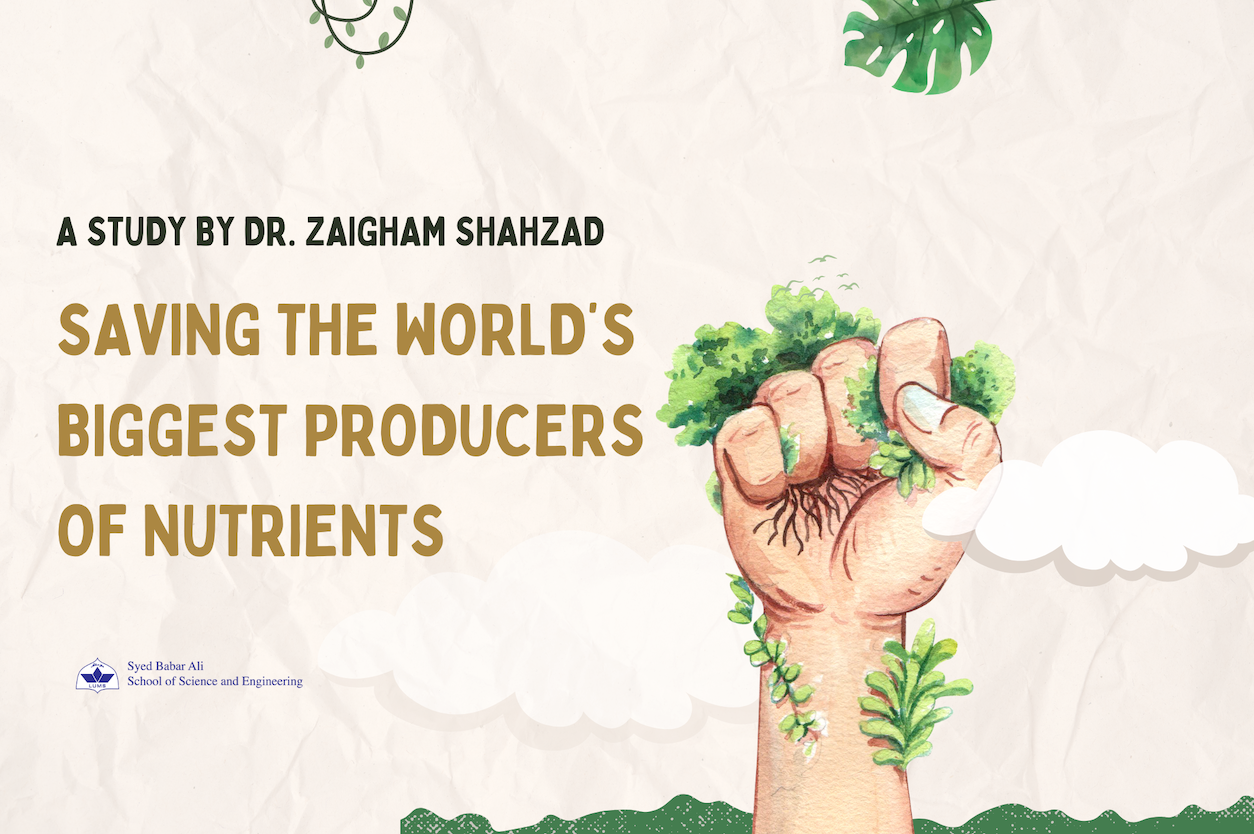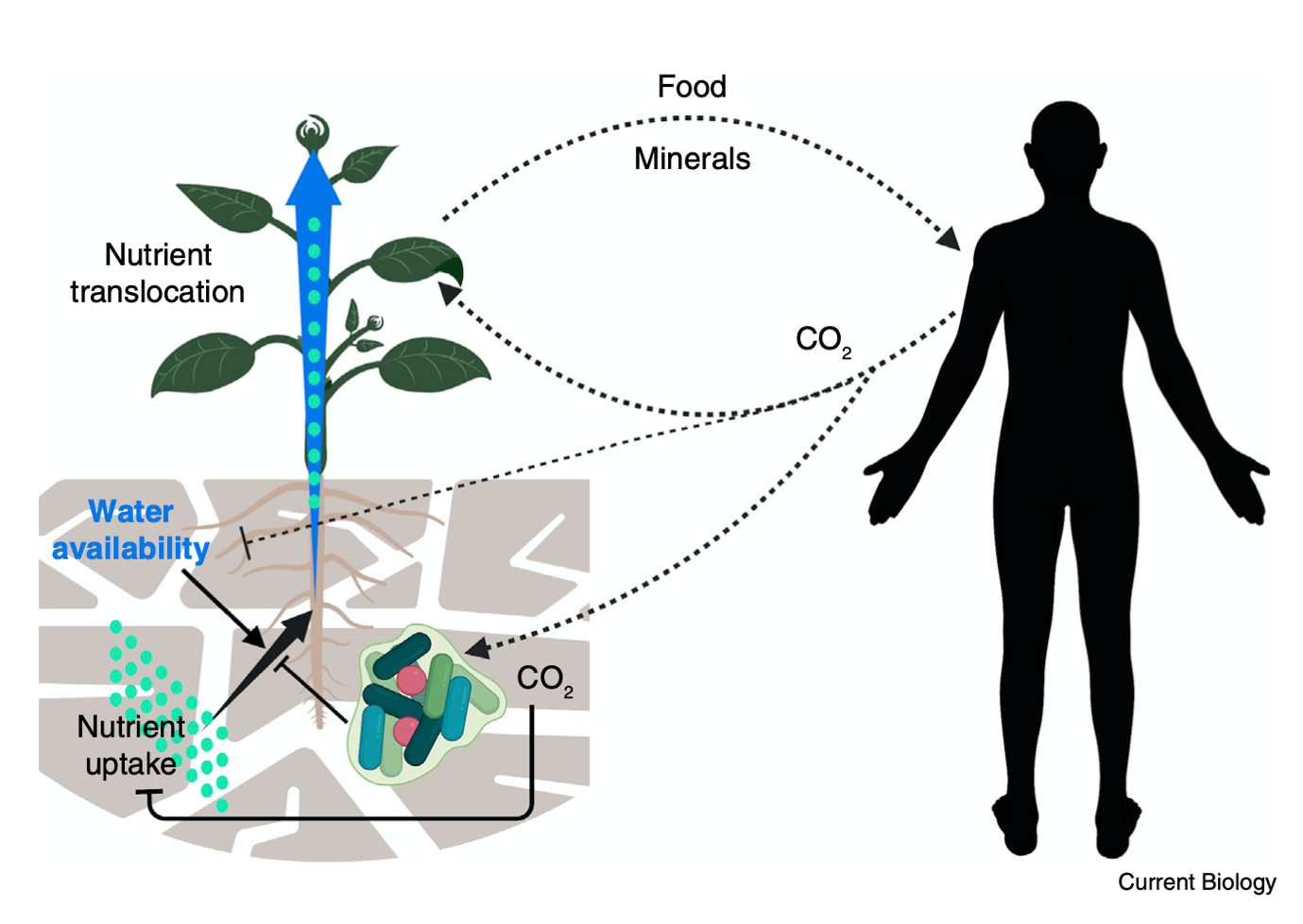
Saving The World’s Biggest Producers of Nutrients – A Study by Dr. Zaigham Shahzad
The world’s biggest producer of nutrients is in grave danger. Plants have been quiet observers of the planet since the post-Cambrian era, where life suddenly and exponentially bloomed into global proportions. Today, CO2 levels in the atmosphere are rising to the point that existing, natural mechanisms to buffer and counter this drastic change is proving inadequate. As the global trend in precipitation and air quality shifts, so does that availability of 14 essential elements for plant growth. This is making it hard for plants to survive, and if left untreated will leave plants essentially starved, leading to a global food catastrophe.
Dr. Zaigham Shahzad from the Department of Life Sciences at SBASSE, is working on understanding the effects of climate change on plant nutrition. In a paper review published recently in Current Biology Dr. Zaigham describes how various climatic stressors impact nutrient homeostasis and how natural variation studies can yield resilient crop production systems to ensure future food security.
The 14 essential elements
We understand that plants require at least 14 elements for growth, development, and food production. Therefore, plants are fundamental to the delivery of essential nutrients to humans. Notably, elevated atmospheric CO2 decreases accumulation of micro and macro nutrients. Similarly, drought impairs water uptake from the soil and results in an imbalance of plant nutrition. Therefore, climate change will aggravate dietary deficiencies of nutrients and perhaps the formation of anti-nutrient compounds. How plants regulate the interplay between climatic stressors and plant nutrition remains elusive. Elucidating mechanisms that govern these interactions is essential to drive the necessary gains in crop yield and nutritional value. Crop cultivars display remarkable diversity in how their nutrient accumulation is affected by climatic stressors. Therefore, understanding these naturally evolved mechanisms provides unique opportunities to develop high yielding and climate change-resilient varieties through molecular marker-assisted breeding or transformative technologies.
Ion homeostasis under climate change
Increased photosynthesis reflects a higher chloroplastic metabolic activity, which requires a constant supply of nutrients. Therefore, coordination between enhanced photosynthetic rate in shoots and stimulated ion transport activity can be expected. However, the high atmospheric CO2 leads to a general decrease in plant macro and microelement accumulation, besides carbon.
An outstanding question
How plants ensure enhanced growth despite meagre nutritional status is very intriguing and an outstanding question. One possibility is that under high CO2 the trade-off between vacuolar storage of nutrients and metabolic demand is tilted in the favor of the latter. Tissue-level ionomic analysis also masks heterogeneity in the concentration of specific elements in discrete cell types and subcellular compartments. Therefore, there is a need to study the effects of CO2 on accumulation of ions in different cell types and compartments in relation to photosynthesis to understand how plants can produce higher biomass under elevated atmospheric CO2 and how this scenario affects the overall nutritional quality of grain crops.

Figure shows the effect of elevated atmospheric CO2 on plant and human nutrition.
Water scarcity and crop productivity
Too much atmospheric CO2 is also predicted to cause water scarcity due to a more erratic pattern in rainfall (figure above), which can affect crop productivity. Water availability mainly drives the biological activity of ecosystems, and increased aridity will markedly impact the bioavailability of essential nutrients (nitrogen and phosphorus) for plants. While a typical plant response to water deficit stress is to restrict growth, the mechanistic link between soil drying and growth inhibition is still not fully understood. Part of the problem is that nutritional status and signals in plant adaptation to drought have been neglected. This knowledge gap hampers the design and the interpretation of screens for plant resilience to climate change.
A solution?
It is challenging to study nutrition in the context of climate change due to many counterintuitive observations regarding the response of mineral composition to climatic stressors. Improving plant nutritional status will undoubtedly lead to having plants with an improved phytonutrient content as mineral elements are the basis for phytochemical biosynthesis (i.e. ascorbic acid, carotenoids, flavonoids, sterols, and fatty acids). Recent developments in metabolomic analysis methods are of great help in obtaining novel insights into qualitative and quantitative changes in the composition of plant phytonutrients under different climate change scenarios. Taken together, continued efforts in this research
field will lead to the development of new crop breeding strategies to secure sustainable and nutritious food production against the backdrop of climate change.
Catch up with more of Dr. Zaigham Shahzad’s research here.

